How To Make Cowboy Trail Tallow
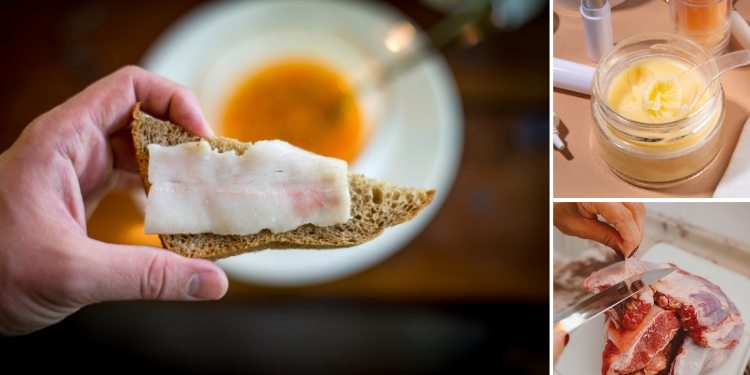
When it comes to survival skills and preparedness planning, some old-school things like Cowboy Trail Tallow continually stand the test of time. If you haven’t heard of it before, it’s a versatile form of rendered animal fat that you can conveniently store in a durable tin.
Rugged pioneers, cowboys, and homesteaders often carried it with them for cooking, lubrication, and even skin care. Just to name a few.
From a preparedness point of view, knowing how to make, store, and use cowboy trail tallow will add to your arsenal of what it takes to survive and thrive when the grid goes down.
What is Cowboy Trail Tallow?
Cowboy Trail Tallow is typically made from slowly rendered beef fat, which is cooked down until impurities are removed. This leaves behind a clean, shelf-stable fat. Unlike fresh meat fat, which spoils quickly, tallow has a much longer shelf life and doesn’t require refrigeration if prepared and stored properly.
Historically, cowboys traveling long distances on the trail carried tins of beef tallow as part of their provisions. It was lightweight, compact, and served many purposes, making it the perfect multi-use supply. Modern preppers appreciate the same qualities: long shelf life, high energy value, and versatility in both daily use and survival scenarios.
How to Make Cowboy Trail Tallow
If you want to stock up on this old-fashioned essential, you can make it yourself with some simple tools and patience. When it comes to sourcing the beef fat, I recommend looking for a full-service or country butcher. They tend to process animals themselves. Then ask them for fat taken from the kidneys and loins.
Ingredients
- 2–5 pounds beef suet, hard fat, or beef trimmings
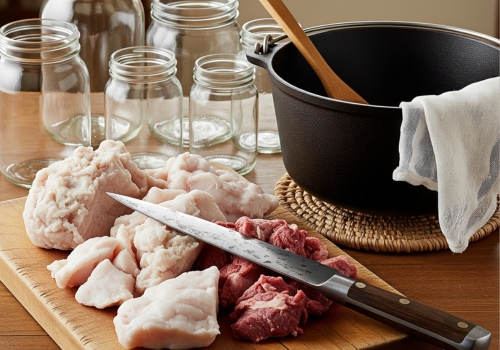
Equipment
- Sharp knife (for trimming and chopping)
- Cutting board
- Heavy pot or Dutch oven or crockpot
- Wooden spoon or heat-safe spatula
- Cheesecloth or fine mesh paint strainer
- Heatproof bowl (to strain into)
- Clean, dry tins or glass jars with lids
- Funnel (optional, but helpful for pouring hot liquid safely)
- Cooling rack
Instructions for Making Cowboy Trail Tallow
Once you have all your ingredients and equipment, you can use the following steps to make cowboy trail tallow.
Step 1: Source & Chill Beef Fat
Acquire beef fat or tallow and place it in the freezer for 20 minutes to firm it up without actually freezing it.
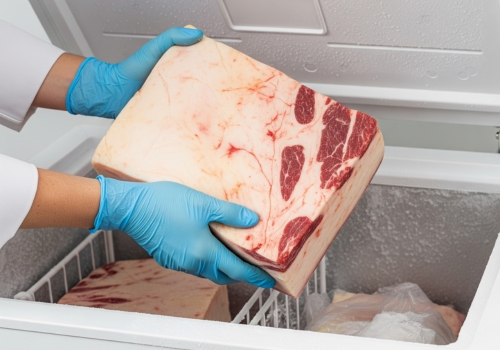
Step 2: Trim and chop.
Cut away any meat or connective tissue, leaving only the fat. Chop the fat into small, even, roughly 1-inch pieces so it renders more evenly.
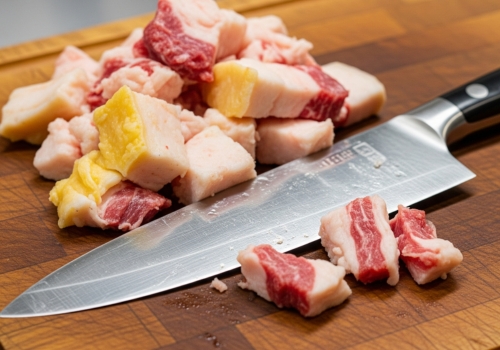
Step 3: Slowly render the fat
Place the chopped fat in a heavy pot or slow cooker over low heat. Be patient; keeping the temperature low prevents burning and ensures a clean tallow.
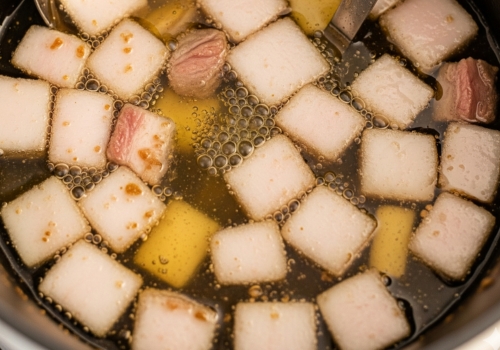
Step 4: Strain and filter
Once the fat has fully liquefied, pour it through a cheesecloth or fine paint strainer to remove any bits of meat or tissue.
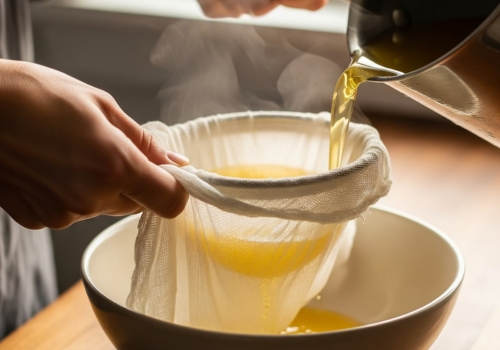
Step 5: Pour into tins or jars
While still hot and liquid, carefully pour the strained tallow into clean, dry tins or glass jars.
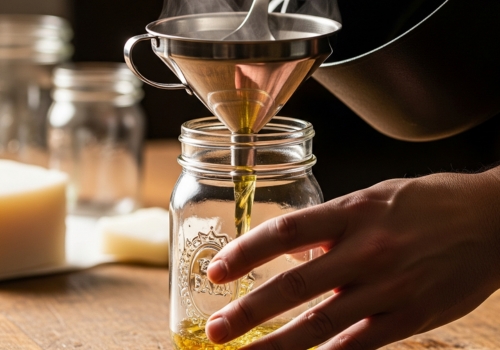
Step 6: Cool and solidify
Allow the tallow to cool at room temperature until it becomes solid.
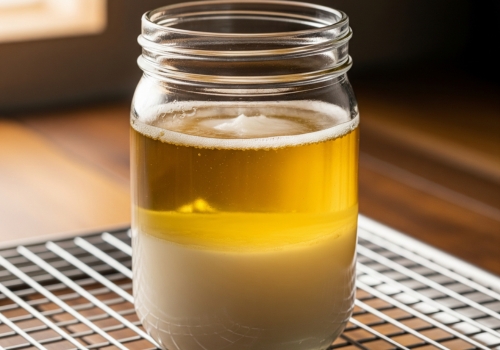
Step 7: Seal and store
Once the cowboy trail tallow is firm, seal the containers tightly and store them in a cool, dark place.
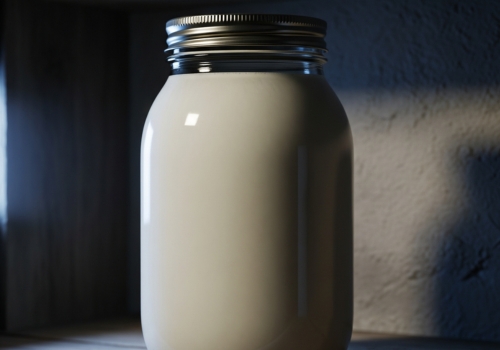
Shelf Life and Storage Tips for Cowboy Tallow
Cowboy Trail Tallow is remarkably shelf-stable when made correctly. However, a few tips can help maximize its longevity beyond 6 months.
- Store in tins or glass jars with tight seals to prevent moisture or contamination.
- Place a layer of aluminum foil over the top for the tallow to reduce contact with the air in the headroom of the can, jar, or storage vessel.
- Keep in a cool, dark place (ideally this one here) away from direct sunlight or heat sources.
- Avoid moisture at all costs. Moisture shortens the life of rendered fat.
- Consider portioning into smaller tins so you only open what you need.
Properly rendered and sealed, tallow can last 12 to 18 months at room temperature, and even longer if refrigerated or frozen.
Alternative Fats for Making Cowboy Trail Tallow
 Cowboy trail tallow was traditionally made with beef fat, as that’s what pioneers and western cowboys had easy access to. However, there are some other animal fat sources that you can also use if you have them on hand. Though the end product might be slightly different than cowboy trail tallow from rendered beef fat.
Cowboy trail tallow was traditionally made with beef fat, as that’s what pioneers and western cowboys had easy access to. However, there are some other animal fat sources that you can also use if you have them on hand. Though the end product might be slightly different than cowboy trail tallow from rendered beef fat.
Venison Fat
Deer works much the same as beef tallow, but it tends to be drier and crumblier once rendered. It’s still shelf-stable if purified properly, though it can have a stronger “gamey” flavor. Best suited for cooking in hearty stews, frying, or seasoning cast iron.
Hog Lard
Rendered pork fat is softer than beef or venison tallow, and it doesn’t harden quite as firmly. It was widely used for cooking, frying, and baking by pioneers. Properly rendered and stored, it can last for months, though it’s not quite as stable as beef tallow. You can hedge your bets by selecting fat from areas near tough joints like the shoulder, hips, and hams.
Other Animal Fats
Tallow rendered from sheep, goat, or even bear grease is possible. Historically, cowboys and pioneers used whatever animal fat they had access to. The key is to render it slowly and filter it carefully so impurities (bits of meat, blood, water) don’t spoil the batch.
For preppers and survivalists, beef tallow is usually preferred because it’s very stable and neutral-tasting, but venison fat or lard can definitely be used if that’s what you have. Just note that the storage life and flavor will vary depending on the fat source.
Why Cowboy Trail Tallow is Helpful for Preppers
 Preppers and survivalists prioritize supplies that are lightweight, long-lasting, and multi-purpose in their stockpile, and cowboy trail tallow checks all those boxes.
Preppers and survivalists prioritize supplies that are lightweight, long-lasting, and multi-purpose in their stockpile, and cowboy trail tallow checks all those boxes.
Long Shelf Life: Properly stored tallow can last for extended periods without refrigeration.
High Caloric Density: Fat packs more calories per gram than carbohydrates or protein, making it an energy powerhouse. It’s also easily digestible as a survival food.
Versatility: From cooking to lubrication to skin protection, tallow has countless applications.
Low-Tech Production: No electricity or modern equipment is required to make or use it. So, you can make it even during a prolonged grid failure.
There are also other historically significant recipes you can try yourself that share these qualities. Here are a few examples:
All of these and more than 120 other recipes are available in The Lost SuperFoods, a book available in physical format.
There are only a few copies left, so click here and order your book now.
Cooking with Cowboy Trail Tallow
One of the main reasons cowboys carried tallow was for cooking. It was used much like butter or oil. It can be used for things like:
- Frying meat, potatoes, or bread in a skillet over a campfire
- Adding flavor and richness to beans or stews
- Greasing pans to prevent food from sticking
In survival situations, tallow provides essential calories and can be used to prepare a wide range of foods without relying on modern cooking oils that spoil more quickly.
Non-Culinary Uses for Cowboy Trail Tallow
Another reason Cowboy Trail Tallow became a staple was its adaptability beyond cooking and skincare. Some additional uses include:
- Lubricant: For tools, firearms, or moving parts that need grease in the field
- Candle making: A wick dipped in tallow becomes a quick, functional candle
- Fire starter: Tallow catches flame easily, making it a useful emergency fire aid

- Leather conditioner: Rubbed into boots, saddles, or packs to maintain durability
- Lubricant: Simple moving metal parts like hinges can be kept from squeaking with a little tallow.
These “bonus uses” make tallow far more valuable than a single-purpose food item.
Cowboy Trail Tallow for Skincare and Protection
On the open range, cowboys didn’t have fancy lotions or balms. Instead, they used tallow directly on skin as a natural moisturizer. Its protective qualities make it useful for:
- Healing dry or cracked hands from manual labor
- Protecting skin from wind, sun, and mild frostbite
- Serving as a base for homemade salves
If you want ready-made solutions, you can choose tinctures that support your skin and help slow down aging.
These mushroom-based tinctures (The Mushroom FOURtress) have been used for centuries in Traditional Chinese Medicine. They contain dual-extracted fruiting body tinctures of cordyceps, lion’s mane, reishi, and turkey tail. Each of these powerful medicinal mushrooms offers unique, research-backed benefits for both body and mind.
Final Thoughts on Cowboy Trail Tallow
Cowboy Trail Tallow may not look flashy compared to modern gear, but its value lies in its time-tested reliability. For centuries, it fueled cowboys, pioneers, ranchers, and survivalists through harsh conditions. Today, it still offers a lightweight, shelf-stable source of calories that can also be used for skincare, fire-starting material, and basic lubrication.
It’s best to work with beef fat harvested from the kidneys and loins. However, venison tallow or hard fat from hogs is also a viable alternative. Then, slow-render it in a vessel on low heat, straining meticulously. Allow to cool in a tin or glass jar. Then keep sealed in a cool, dark place for up to two years.
Before you go, I want to recommend an excellent product for gaining independence when it comes to water. The Water Freedom System was developed based on declassified U.S. military plans. This system has been used for years on the frontlines in arid deserts, and now it’s available for the general public. Check out the plans here!
You may also like:

How To Make ANZAC Biscuits (5+ Years Shelf Life)
The Lost Incan SuperFood Recipe Revealed by NASA (Video)
7 Food Preservation Methods From The Bible You Can Still Use Today
Stop Ignoring These Long-Lasting Protein Sources
10 Long-Lasting Foods You Can Get From Food Banks
35 Foods That Can Last a Century
Read the full article here









